The world celebrates 140 years since the birth of Nicholas Roerich, a Russian artist, theosophist and archeologist, regarded as one of the inspirers of the New Age ideology,
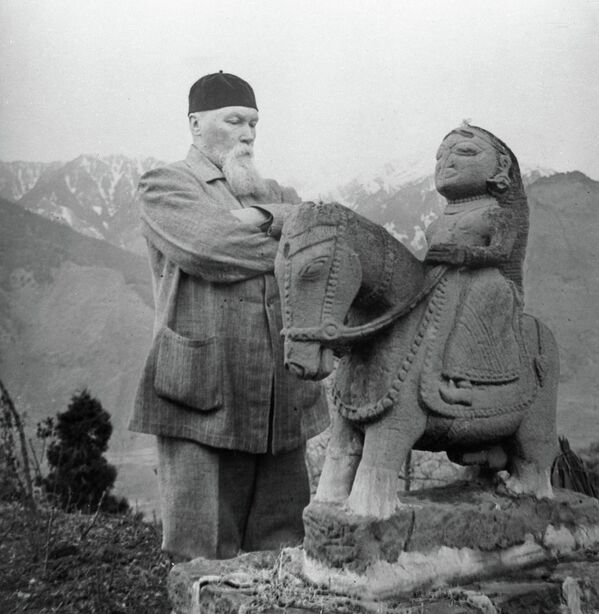
Nicholas Roerich was born in Saint Petersburg October 9, 1874. Since his earliest years he was deeply interested in art, archeology, Russia’s history, and the rich cultural and religious heritage of the East, which was reflected in his works.
Above: Artists Nocholas Roerich (1874-1947) views a Tibetan sculpture. A photo copy.
Above: Artists Nocholas Roerich (1874-1947) views a Tibetan sculpture. A photo copy.
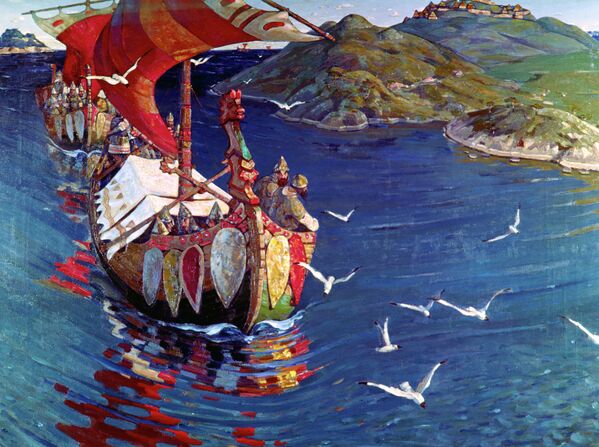
Young Roerich’s shaping personality was significantly influenced by outstanding persons of his time, such as novelist Leo Tolstoy and artist Ilya Repin.
Above: A copy of “Guests from Overseas” by painter Nicholas Roerich, 1901. Canvas, oil. The original picture is in the State Tretyakov Gallery.
Above: A copy of “Guests from Overseas” by painter Nicholas Roerich, 1901. Canvas, oil. The original picture is in the State Tretyakov Gallery.
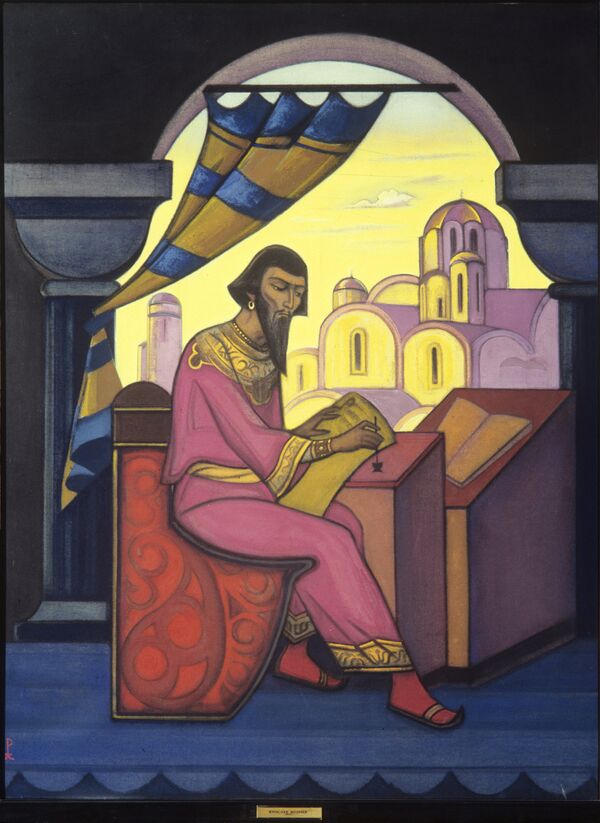
In 1901 he got married. His wife Helena shared her husband’s beliefs and participated in his expeditions. They had two sons, one of them becoming an Orientalist and the other an artist.
Above: A copy of “Yaroslav the Wise” by Nicholas Roerich.
Above: A copy of “Yaroslav the Wise” by Nicholas Roerich.
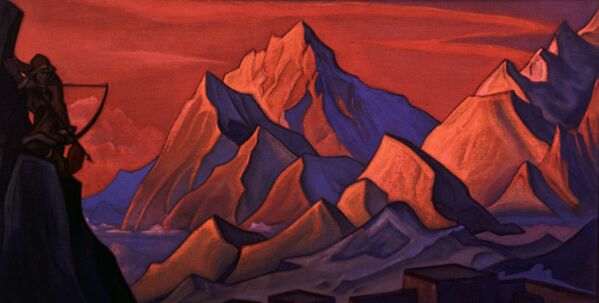
After the Russian October Revolution in 1917, Nicholas Roerich put much hope on the Bolshevik authorities. He believed they could build a truthful and enlightened society and found much similar between Communism and Buddhism.
Above: A copy of “Message of Shambhala (Arrow Letter)” by Nicholas Roerich. I. M. Bogdanova’s collection.
Above: A copy of “Message of Shambhala (Arrow Letter)” by Nicholas Roerich. I. M. Bogdanova’s collection.
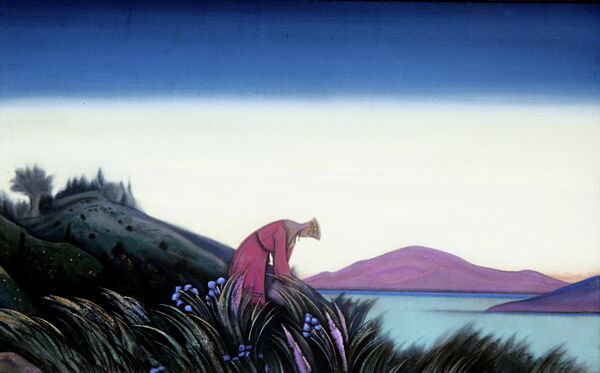
He conducted the Central Asian Expedition between 1923 and 1928, which covered Kashmir, Xinjiang, Siberia, Mongolia, and Tibet. Roerich did a lot of archaeological and ethnographic research.
Above: A copy of “Vasilisa the Beautiful” by Nicholas Roerich.
Above: A copy of “Vasilisa the Beautiful” by Nicholas Roerich.
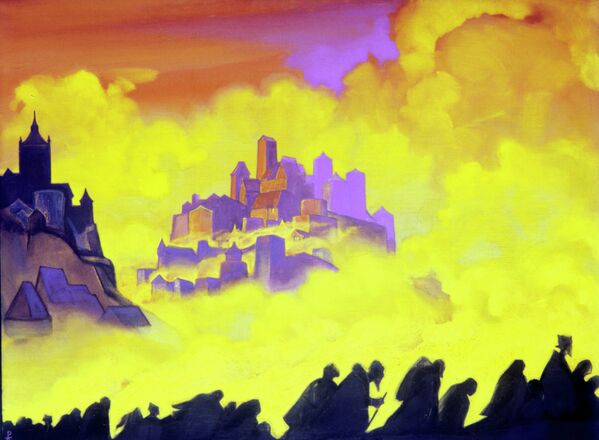
Some people referred to Roerich as to a Western Dalai Lama. During the expedition, he strived to reach Tibet’s capital Lhasa and strike relationship with Dalai Lama, but despite all efforts and letters he was barred from entering the city.
Above: A copy of “Armageddon” by Nicholas Roerich.
Above: A copy of “Armageddon” by Nicholas Roerich.
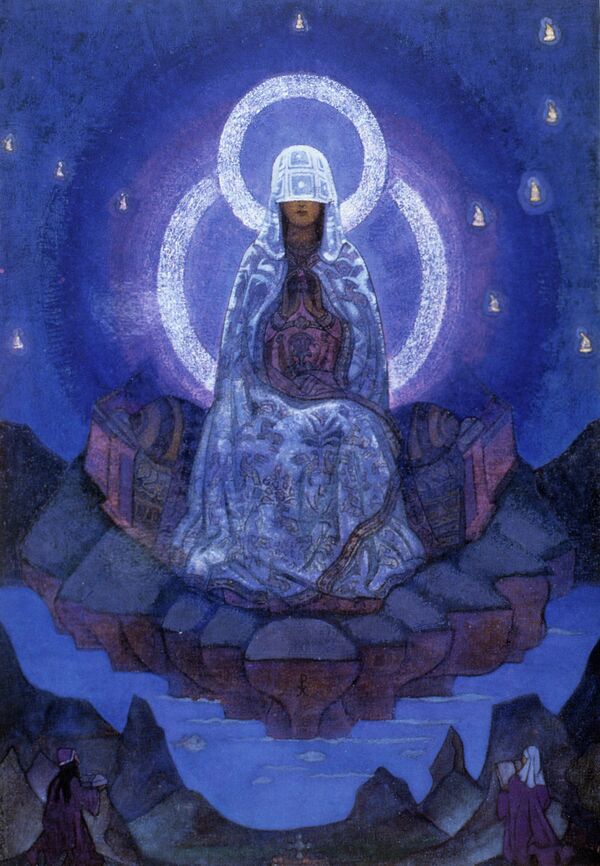
Some believe Roerich was attempting to discover Shambhala, a mythical realm of the wise, allegedly hidden in Tibet.
Above: A copy of “Mother of the World” by Nicholas Roerich.
Above: A copy of “Mother of the World” by Nicholas Roerich.
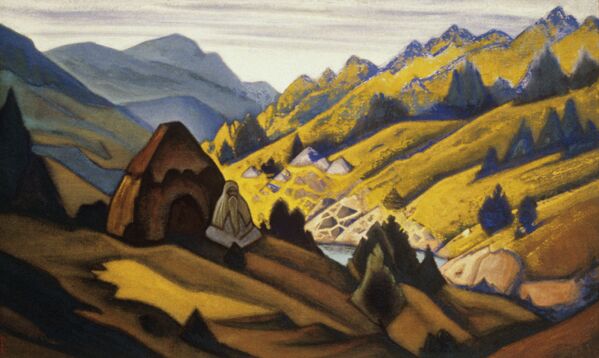
Basing on the expedition findings, in the Western Himalayas Roerich established the Urusvati Institute of Himalayan Studies. It included a medical, botanical, zoological, biochemical and other laboratories.
Above: A copy of “Hermit” by Nicholas Roerich. 1941.
Above: A copy of “Hermit” by Nicholas Roerich. 1941.

In 1935 Roerich succeeded in introducing the Treaty on the Protection of Artistic and Scientific Institutions and Historic Monuments, better known as the Roerich Pact. It was signed by the representatives of 21 countries.
Above: A copy of “Partisans” by Nicholas Roerich, 1943. Canvas, tempera. The original is in the State Russian Museum.
Above: A copy of “Partisans” by Nicholas Roerich, 1943. Canvas, tempera. The original is in the State Russian Museum.
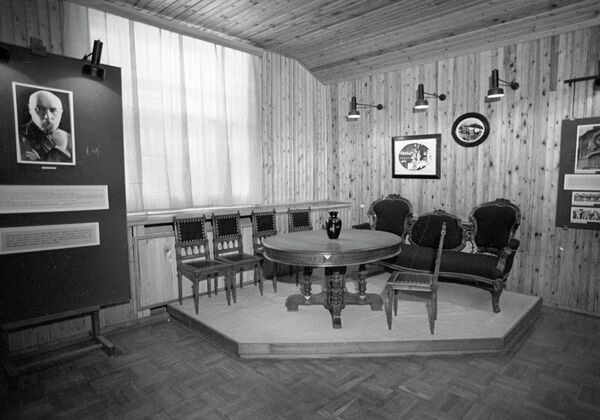
The Roerich family developed the teaching of Agni Yoga, aimed at fostering both spiritual evolution of individual which supposedly opens doors to a higher form of existence.
Above: A room in the Nicholas Roerich Estate Museum in Izvara, the Leningrad Region, Russia.
Above: A room in the Nicholas Roerich Estate Museum in Izvara, the Leningrad Region, Russia.
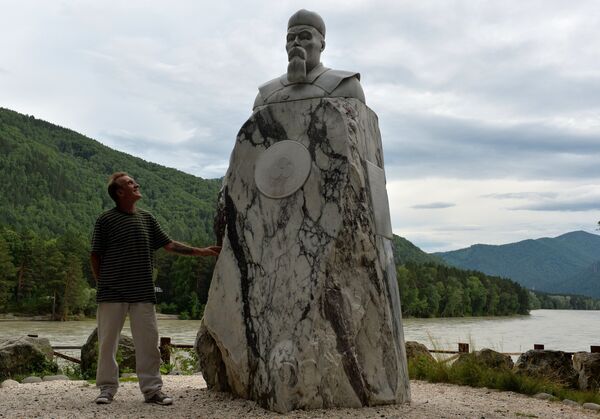
“Every striving toward enlightenment is welcome. Every prejudice, caused by ignorance, is exposed’, he declares in his book “The New era Community”.
Above: Sculptor Vladimir Voichishin at his monument to Nicholas Roerich on a river bank in Altai Territory.
Above: Sculptor Vladimir Voichishin at his monument to Nicholas Roerich on a river bank in Altai Territory.

